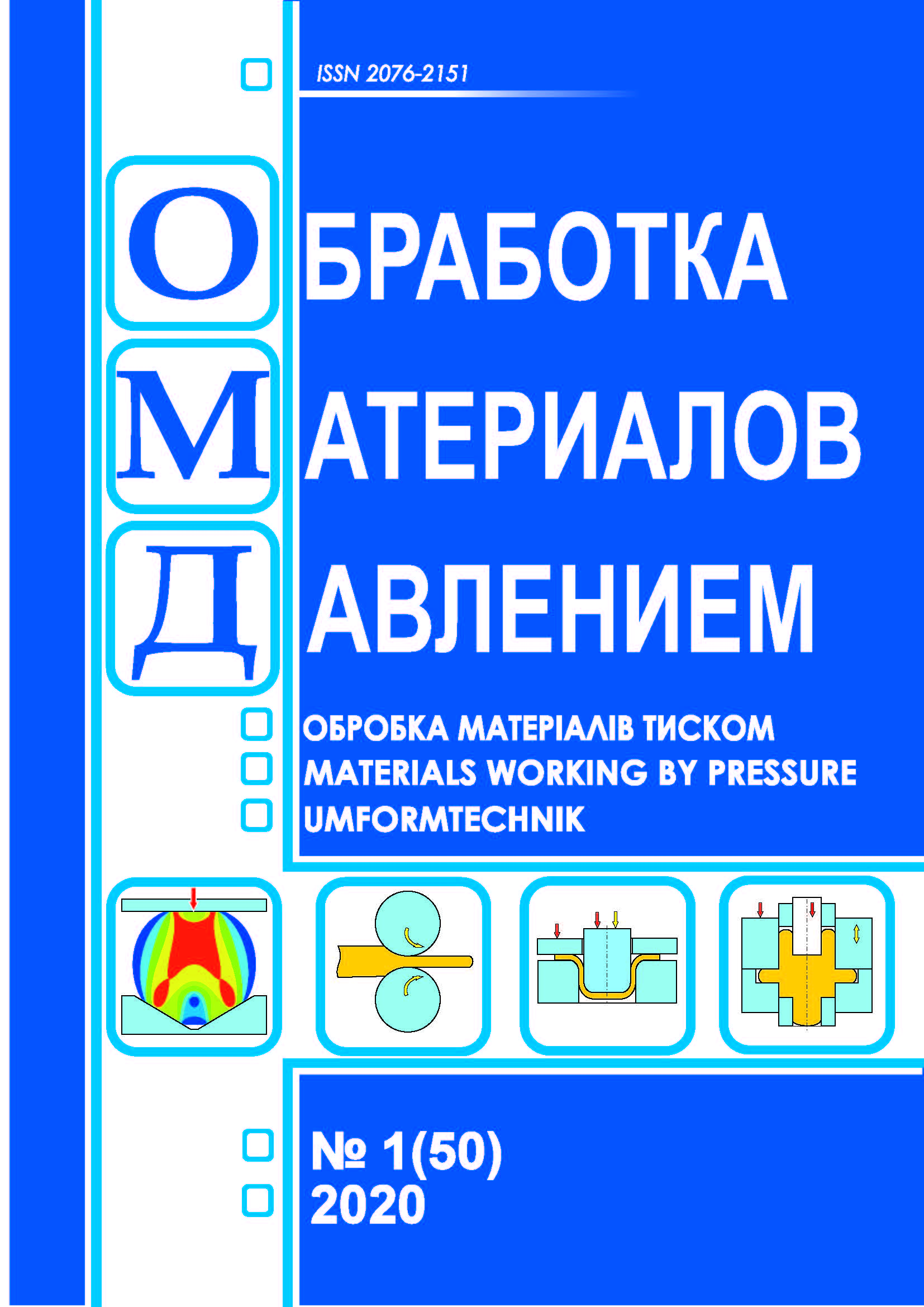Tensile tests of ring samples
DOI:
https://doi.org/10.37142/2076-2151/2020-1(50)104Keywords:
material testing, mechanical properties of pipes, ring samples, stress concentrator.Abstract
Bobukh O. S., Vovk A. S., Kuzmina O. M., Andreev A. K., Frolov Y. V., Samsonenko A. A. Tensile tests of ring samples. Material working by pressure. 2020. № 1 (50). Р. 104-113.
Assessment of the level of mechanical properties of metal products is one of the urgent and important tasks in mechanical engineering. The strength of the structures, the weight of the product and their cost depend, in particular, on the values of the characteristics of these properties. The basic parameters of mechanical properties are obtained by static tests for compression, tensile, bending or rotation of standard samples, as well as dynamic (shock) tests. The performance of such tests for samples obtained from tubes is subject to difficulties which prevent the obtaining of valid values of mechanical properties. This requires verification and refinement of how to test such samples. The article is devoted to the development of the methodology of such research. The device and the basic technology for tensile testing of ring samples cutting from pipes have been developed in order to quantify their mechanical properties. A feature of the device is that it makes it possible to compensate for the friction forces during tensile tests, and due to interchangeable bearings it can be adapted to a wide range of pipes. A study was made of the shape and size of the stress concentrator deposited on the sample. The relationships between the shape of the loading curves during tensile tests and the characteristic forces in the case of using various types of stress concentrators are determined. To prevent plastic deformation in one of the supporting sections, it is proposed to use ring samples with stress concentrators as the holes drilled in the wall of the ring sample. This method is relatively simple accordingly to other testing methods. For the samples of pipes made of austenitic 1.4401 steel (EN 10027) and steel 1.0580 (EN 10297-1), the minimum required area ratios in diametrically opposite support sections were determined to provide plastic deformation in only one of them.

